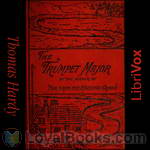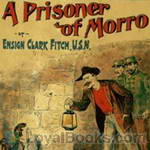|
Books Should Be Free Loyal Books Free Public Domain Audiobooks & eBook Downloads |
|
|
Books Should Be Free Loyal Books Free Public Domain Audiobooks & eBook Downloads |
|
War Stories |
|---|
|
Book type:
Sort by:
View by:
|
By: Thomas Hardy (1840-1928) | |
|---|---|
 The Trumpet-Major
The Trumpet-Major
Our heroine, Anne Garland, lives quietly in a rural community deep in the English countryside. However, the arrival of several regiments preparing for an expected invasion brings colour and chaos to the county. A graceful and charming young woman, Anne is pursued by three suitors: John Loveday, the trumpet-major in a British regiment, honest and loyal; his brother Robert, a merchant seaman and womaniser, and Festus Derriman, the cowardly son of the local squire. Set at the time of the Napoleonic wars, this is the author’s only historical novel, and unusually for Hardy’s stories, most of the characters live happily ever after. | |
By: Thomas Herbert Russell (1862-1947) | |
|---|---|
 America's War for Humanity
America's War for Humanity
| |
By: Thomas Hope Floyd (1896-1973) | |
|---|---|
 At Ypres with Best-Dunkley
At Ypres with Best-Dunkley
| |
By: Thomas Owen Marden (1866-) | |
|---|---|
 A Short History of the 6th Division Aug. 1914-March 1919
A Short History of the 6th Division Aug. 1914-March 1919
| |
By: Thomas Wentworth Higginson | |
|---|---|
 Army Life in a Black Regiment
Army Life in a Black Regiment
These pages record some of the adventures of the First South Carolina Volunteers, the first slave regiment mustered into the service of the United States during the late civil war. It was, indeed, the first colored regiment of any kind so mustered, except a portion of the troops raised by Major-General Butler at New Orleans. These scarcely belonged to the same class, however, being recruited from the free colored population of that city, a comparatively self-reliant and educated race. (From the text) | |
By: Thorstein Veblen (1857-1929) | |
|---|---|
 An Inquiry Into The Nature Of Peace And The Terms Of Its Perpetuation
An Inquiry Into The Nature Of Peace And The Terms Of Its Perpetuation
| |
By: Tickner Edwardes (1865-1944) | |
|---|---|
 With The Royal Army Medical Corps in Egypt
With The Royal Army Medical Corps in Egypt
Throughout the First World War, members of the Royal Army Medical Corps provided constant support for British and Allied military troops whether they were fighting on the frontline or engaged in other operations within all areas of the conflict. With the Great War continuing unabated and the battlefront extending through Europe into the Middle East and beyond, a rapid increase in military medical support facilities and infrastructure was urgently implemented to handle the ever increasing number of wounded, maimed and sick troops evacuated from the combat zone that needed to receive urgent medical and life-saving care... | |
By: Tobias Smollett (1721-1771) | |
|---|---|
 Adventures of Roderick Random
Adventures of Roderick Random
I am Roderick Random. This is the contemporary story of my struggle against the adversity of orphan-hood, poverty, press gangs, bloody duels, rival fortune hunters, and the challenge to be well-dressed through it all. In the course of recounting my adventures to you, dear reader, I will give you a front row seat to the characters of English eighteenth century life including highway robbers, womanizing monks, debt-laden gallants, lecherous corrupt officials, effeminate sea captains, bloodthirsty surgeons, and my dear friend Miss Williams, a reformed prostitute... | |
By: Trumbull White (1868-1941) | |
|---|---|
 Our War with Spain for Cuba's Freedom
Our War with Spain for Cuba's Freedom
| |
By: Ulysses S. Grant (1822-1885) | |
|---|---|
 Personal Memoirs of U. S. Grant
Personal Memoirs of U. S. Grant
"In preparing these volumes for the public, I have entered upon the task with the sincere desire to avoid doing injustice to any one, whether on the National or Confederate side, other than the unavoidable injustice of not making mention often where special mention is due. There must be many errors of omission in this work, because the subject is too large to be treated of in two volumes in such way as to do justice to all the officers and men engaged. There were thousands of instances, during the rebellion, of individual, company, regimental and brigade deeds of heroism which deserve special mention and are not here alluded to... | |
By: United States Arms Control and Disarmament Agency | |
|---|---|
 Worldwide Effects of Nuclear War: Some Perspectives
Worldwide Effects of Nuclear War: Some Perspectives
This is a concise yet thorough explanation of what might happen to our world in the aftermath of a nuclear war. The myriad of potential effects will be global and wide-spread, and the potentials are glazed over in this short work. | |
By: United States Army | |
|---|---|
 Project Horizon: Establishment of a Lunar Outpost
Project Horizon: Establishment of a Lunar Outpost
The US national policy on space includes the objective of developing and exploiting this Nation's space capability as necessary to achieve national political, scientific, and security objectives. The establishment of a manned outpost in the lunar environment will demonstrate United States leadership in space. It will also provide a basis for further explorations and operations on the lunar surface, as well as a supporting capability for other US operations in space. - Summary from the text | |
By: United States Office of Strategic Services | |
|---|---|
 Simple Sabotage Field Manual
Simple Sabotage Field Manual
Formed during World War II, the United States Office of Strategic Services (OSS), was organized for special operations and intelligence gathering and analysis. Included in its mission was the implementation of, and training of foreign forces in, propaganda, espionage, subversion, and sabotage. After the war, OSS functions were transferred to the newly formed Central Intelligence Agency (CIA). This “Simple Sabotage Field Manual” was used by OSS agents in training “citizen-saboteurs” in methods for inciting and executing simple sabotage to thwart industry and other vital functions in Axis-occupied areas. | |
By: United States. Dept. of Defense | |
|---|---|
 The Armed Forces Officer Department of the Army Pamphlet 600-2
The Armed Forces Officer Department of the Army Pamphlet 600-2
| |
By: United States. War Dept. | |
|---|---|
 Infantry Drill Regulations, United States Army, 1911 Corrected to April 15, 1917 (Changes Nos. 1 to 19)
Infantry Drill Regulations, United States Army, 1911 Corrected to April 15, 1917 (Changes Nos. 1 to 19)
| |
By: University of Oxford. Faculty of Modern History | |
|---|---|
 Why We Are at War (2nd Edition, revised)
Why We Are at War (2nd Edition, revised)
| |
By: Unknown | |
|---|---|
 A School History of the Great War
A School History of the Great War
A brief history of The Great War (World War I) designed for students in grades seven and eight. Special emphasis on European history leading up to the war, reasons and events leading to America’s eventual entering the war, and possible ramifications of the war for future generations. | |
 C. Sallusti Crispi De Bello Catilinario Et Jugurthino
C. Sallusti Crispi De Bello Catilinario Et Jugurthino
| |
 Conspiracy of Catiline and the Jurgurthine War
Conspiracy of Catiline and the Jurgurthine War
| |
 A Handbook of the Boer War With General Map of South Africa and 18 Sketch Maps and Plans
A Handbook of the Boer War With General Map of South Africa and 18 Sketch Maps and Plans
| |
 Autobiography of Ma-ka-tai-me-she-kia-kiak, or Black Hawk
Autobiography of Ma-ka-tai-me-she-kia-kiak, or Black Hawk
| |
 A Critical Exposition of the Popular 'Jihád' Showing that all the Wars of Mohammad Were Defensive; and that Aggressive War, or Compulsory Conversion, is not Allowed in The Koran - 1885
A Critical Exposition of the Popular 'Jihád' Showing that all the Wars of Mohammad Were Defensive; and that Aggressive War, or Compulsory Conversion, is not Allowed in The Koran - 1885
| |
 Through Palestine with the Twentieth Machine Gun Squadron
Through Palestine with the Twentieth Machine Gun Squadron
| |
 Short History of the London Rifle Brigade
Short History of the London Rifle Brigade
| |
 "Contemptible", by "Casualty"
"Contemptible", by "Casualty"
| |
 A Little Rebel A Novel
A Little Rebel A Novel
| |
 The Long Trick
The Long Trick
| |
By: Upton Sinclair (1878-1968) | |
|---|---|
 A Prisoner of Morro
A Prisoner of Morro
Upton Sinclair, born in 1878 was a Pulitzer Prize-winning American author. He wrote over 90 books in many genres. Best known for his muckraking novel, The Jungle, Sinclair also wrote adventure fiction. Many of these works were written under the pseudonym, Ensign Clark Fitch, U.S.N. A Prisoner of Morrow, published in 1898 when Sinclair was but 20 years old, is one of these efforts. The period for this work is the ten-week Spanish–American War which occurred in 1898. Revolts against Spanish rule had been prevalent for decades in Cuba and were closely watched by Americans... | |
By: Valentine Williams (1883-1946) | |
|---|---|
 Okewood of the Secret Service
Okewood of the Secret Service
| |
By: Various | |
|---|---|
 New York Times Current History; The European War, Vol 2, No. 3, June, 1915 April-September, 1915
New York Times Current History; The European War, Vol 2, No. 3, June, 1915 April-September, 1915
| |
 New York Times Current History
New York Times Current History
The New York Times, CURRENT HISTORY, A Monthly Magazine, THE EUROPEAN WAR, VOLUME IIAPRIL, 1915 Germany's War Zone and Neutral Flags The German Decree and Interchange of Notes Answering American Protests to Germany and Britain BERLIN, Feb. 4, (by wireless to Sayville, L.I.)--The German Admiralty today issued the following communication: The waters around Great Britain and Ireland, including the whole English Channel, are declared a war zone on and after Feb. 18, 1915. Every enemy merchant ship found in this war zone will be destroyed, even if it is impossible to avert dangers which threaten the crew and passengers... | |
 Bomb: The 1945 Test of the First Atomic Bomb
Bomb: The 1945 Test of the First Atomic Bomb
These two publications put out by the U.S. government are about the Trinity site in New Mexico where in 1945 the first atomic bomb was tested. Each publication complements the other, though there is some duplication. These are descriptions of the test itself and of the planning and organization leading up to the test. They also tell what was done with the site after the test and how it became a national historic landmark. - Summary by david wales | |
 Causes Of The American Civil War: Secession Statements Of Five Confederate States (South Carolina, Texas, Virginia, Georgia, Mississippi)
Causes Of The American Civil War: Secession Statements Of Five Confederate States (South Carolina, Texas, Virginia, Georgia, Mississippi)
Some of the states who rebelled against the Federal Government in the American Civil War issued statements by nascent governing bodies explaining why they were attempting to leave. Here are the statements, published in 1860 and 1861, of South Carolina, Texas, Virginia, Mississippi, and Georgia. - Summary by David Wales | |
 Cambridge Modern History. Volume 03, The Wars of Religion
Cambridge Modern History. Volume 03, The Wars of Religion
The Cambridge Modern History is a universal history covering the period from 1450 to 1910. It was published in 14 volumes between 1902 and 1912. The series was planned by Lord Acton, who intended it to be a monument of objective, collaborative scholarship, and edited by A.W. Ward, G. W. Prothero and Stanley Leathes. From the preface: "The present volume, as its title imports, relates a complicated series of conflicts of which the origin or the pretext has for the most part to be sought in the great religious schism with which the preceding volume was concerned... | |
 U.S. Army in the Iraq War Volume 1: Invasion Insurgency Civil War 2003 – 2006
U.S. Army in the Iraq War Volume 1: Invasion Insurgency Civil War 2003 – 2006
In September 2013, Chief of Staff of the Army General Raymond T. Odierno directed the Operation Iraqi Freedom Study Group to research and write an operational history of the U.S. Army’s experience in the Iraq War from 2003 to 2011. This volume, The United States Army in the Iraq War, 2003-2006, is the first of two fulfilling that task. It tells the story of the U.S.-led campaigns to remove Saddam Hussein and his Iraqi Ba’athist regime from power in 2003 and to stabilize the country following those operations... | |
 U.S. Army in the Iraq War Volume 2: Surge and Withdrawal 2007 – 2011
U.S. Army in the Iraq War Volume 2: Surge and Withdrawal 2007 – 2011
The Iraq War has been the costliest U.S. conflict since the Vietnam War. To date, few official studies have been conducted to review what happened, why it happened, and what lessons should be drawn. The U.S. Army in the Iraq War is the Army’s initial operational level analysis of this conflict, written in narrative format, with assessments and lessons embedded throughout the work. This study reviews the conflict from a Landpower perspective and includes the contributions of coalition allies, the U... | |
 Korean War: Brief Histories
Korean War: Brief Histories
A collection of brief histories addressing the major campaigns or phases of the Korean War. | |
 Civil War Women, North And South
Civil War Women, North And South
This recording comprises two narratives. One is by Cora Mitchel who in 1861 was a girl in her mid-teens. Her Unionist family escaped the Confederacy from their home in south Georgia to Rhode Island. This is her story written about 1916. The second narrative is by Charlotte St. Julien Ravenel of South Carolina, a contemporary journal written in the closing months of the civil war in 1865. - Summary by David Wales | |
By: Vernon Bartlett (1894-1983) | |
|---|---|
 Mud and Khaki Sketches from Flanders and France
Mud and Khaki Sketches from Flanders and France
| |
By: Vernon L. (Vernon Lyman) Kellogg (1867-1937) | |
|---|---|
 Herbert Hoover The Man and His Work
Herbert Hoover The Man and His Work
| |
By: Vicente Blasco Ibáñez (1867-1928) | |
|---|---|
 Four Horsemen of the Apocalypse
Four Horsemen of the Apocalypse
The Four Horsemen of the Apocalypse, by Vicente Blasco Ibañez and translated into English by Charlotte Brewster Jordan, depicts two branches of a family with its roots in the pampas of Argentina. The wealthy Argentinian, Julio Madariaga, comes from Spain and raises himself from poverty, becoming a self-made, wealthy cattleman. He is a man of extremes; an honest man with a rascally knack for taking advantage of others; a self-made man with overweening pride, prejudices, and a sharp, flinty temper that can spark into violence, he is at the same time given to great generosity toward those who are under him... | |
By: Victor Appleton | |
|---|---|
 The Moving Picture Boys on the War Front Or, The Hunt for the Stolen Army Films
The Moving Picture Boys on the War Front Or, The Hunt for the Stolen Army Films
| |
By: Victor Lefebure | |
|---|---|
 The Riddle of the Rhine; chemical strategy in peace and war
The Riddle of the Rhine; chemical strategy in peace and war
| |
By: Violet Hunt (1862-1942) | |
|---|---|
 Last Ditch
Last Ditch
An amusing but deeply poignant story, “The Last Ditch” describes the wartime experiences of a British aristocratic family who gradually realize that their old feudal perquisites are passing away in the trenches of the Great War and that unprecedented new forces are pushing out the comfortable old ways. Lady Arles is the matriarch determined to resist to her last breath. Her bohemian young daughter Venice is set on a career as a poet and even dallies with a Socialist lover, but in some ways is the family member who seems the most helpless without her old aristocratic privileges... | |
By: Violetta Thurstan (1879-1978) | |
|---|---|
 Field Hospital and Flying Column Being the Journal of an English Nursing Sister in Belgium & Russia
Field Hospital and Flying Column Being the Journal of an English Nursing Sister in Belgium & Russia
| |
By: Virginia Woolf (1882-1941) | |
|---|---|
 Jacob's Room
Jacob's Room
The novel centers, in a very ambiguous way, around the life story of the protagonist Jacob Flanders, and is presented entirely by the impressions other characters have of Jacob [except for those times when we do indeed get Jacob's perspective]. Thus, although it could be said that the book is primarily a character study and has little in the way of plot or background, the narrative is constructed as a void in place of the central character, if indeed the novel can be said to have a 'protagonist' in conventional terms. Motifs of emptiness and absence haunt the novel and establish its elegiac feel. | |
By: W. Basil Worsfold (1858-1939) | |
|---|---|
 Lord Milner's Work in South Africa From its Commencement in 1897 to the Peace of Vereeniging in 1902
Lord Milner's Work in South Africa From its Commencement in 1897 to the Peace of Vereeniging in 1902
| |
By: W. C. C. Weetman | |
|---|---|
 The Sherwood Foresters in the Great War 1914 - 1919 History of the 1/8th Battalion
The Sherwood Foresters in the Great War 1914 - 1919 History of the 1/8th Battalion
| |
By: W. Douglas (Wilfrid Douglas) Newton (1884-1951) | |
|---|---|
 Westward with the Prince of Wales
Westward with the Prince of Wales
| |
By: W. H. (William Harvey) Leathem | |
|---|---|
 The Comrade in White
The Comrade in White
| |
By: W. L. (William Leonard) Courtney (1850-1928) | |
|---|---|
 Armageddon—And After
Armageddon—And After
| |
By: W. P. Shervill | |
|---|---|
 Two Daring Young Patriots or, Outwitting the Huns
Two Daring Young Patriots or, Outwitting the Huns
| |
By: Walt Whitman (1819-1892) | |
|---|---|
 The Wound Dresser
The Wound Dresser
The Wound Dresser is a series of letters written from the hospitals in Washington by Walt Whitman during the War of the Rebellion to The New York Times, the Brooklyn Eagle and his mother, edited by Richard Maurice Burke, M.D., one of Whitman's literary executors. | |
By: Walter Alden Dyer (1878-1943) | |
|---|---|
 Pierrot, Dog Of Belgium
Pierrot, Dog Of Belgium
This 1915 novella was published as the First World War raged. "Belgium lies bleeding. Across her level, lush meadows the harsh-shod hosts of war have marched. Beside her peaceful waters the sons of God have spilled each other’s blood. Beneath her noble trees have raged the fires of human hate. Her king and his brave warriors have fought to save that which was their own and, driven back, have left their smiling land to suffer the desolation which has ever been the conqueror’s boast. Her ancient cities smoke... | |
By: Walter Alexander Raleigh (1861-1922) | |
|---|---|
 The War in the Air; Vol. 1 The Part played in the Great War by the Royal Air Force
The War in the Air; Vol. 1 The Part played in the Great War by the Royal Air Force
| |
 England and the War
England and the War
| |
By: Walter Fenton Mott | |
|---|---|
 Young Glory and the Spanish Cruiser A Brave Fight Against Odds
Young Glory and the Spanish Cruiser A Brave Fight Against Odds
| |
By: Walter Wood (1866-?) | |
|---|---|
 In the Line of Battle
In the Line of Battle
“A COLLECTION OF absolutely authentic accounts by privates and non-commissioned officers.... We see a great simplicity and directness of observation and recital, so admirable that one page of such writing is worth all the folios of the war experts and correspondents, not to say romancers and publicists.” The Athenæum. “THE HUMAN SIDE, the naked horror and simple glory of actual conflict, is what Mr. Wood’s soldiers are concerned with, and the stories they tell give a clearer picture of this side of war than can be found in any other form... | |
By: Ward Muir (1878-1927) | |
|---|---|
 Observations of an Orderly
Observations of an Orderly
Ward Muir brings us into the heart of an English war hospital, describing scenes of cleanliness, triumph, order and sadness. Through the eyes of the orderly we get to see the processes that kept the wards running, and relive some tales from within the hospital walls. | |
By: Warren Crocker Herrick (1898-) | |
|---|---|
 Frank H. Nelson of Cincinnati
Frank H. Nelson of Cincinnati
| |